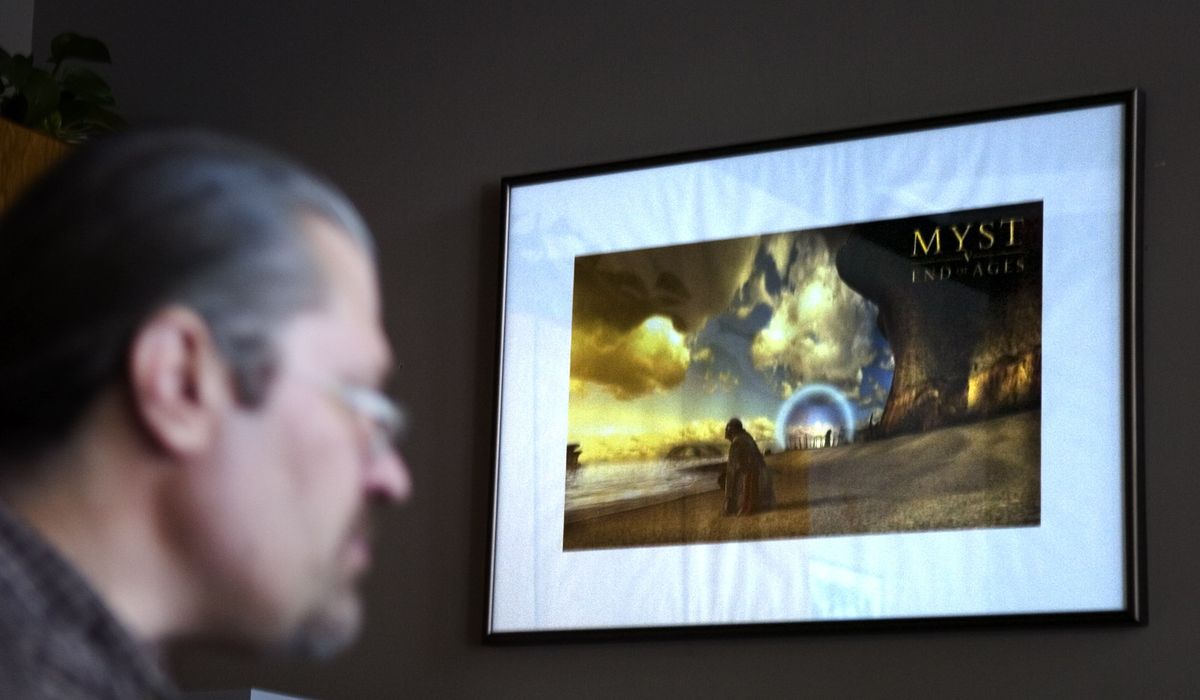‘Myst’ creator keeps the dream alive
A new project under wraps, with a whole new game world

Twenty years ago, a small video game company in Mead released a CD-ROM game called “Myst.” At a time when computer games involved fighting aliens or driving cartoon cars around a track, “Myst” broke the mold and catapulted into pop culture history.
It became the best-selling video game until 2003 when “The Sims” overtook the most-popular videogame spot.
The number of people who have played “Myst” – or any of its later modified versions – exceeds 10 million. Articles around the world credit Cyan Worlds, the Mead-based firm headed by brothers Robyn and Rand Miller, with changing the way people used computers.
Two decades later, Rand Miller says no one at Cyan had the slightest idea that “Myst” would reach that level of success.
“We just happened to be at the right place at the right time. There are many other more-talented people out there who haven’t been that successful,” he said.
The Millers and their team of designers created a game in which players explored a deserted island, hunting for clues that were revealed gradually. The goal involved unraveling a family mystery, not conquering territory.
Two decades later, the unexpected successes of “Myst” and the 1997 sequel “Riven” left Cyan Worlds with the burden of being expected to continue inventing the future.
During the early 2000s the private company expanded to around 60 workers as it took on the challenge of creating a massive online version of the basic “Myst” world. That became a massive multiplayer game, “Uru.”
But in 2005, Cyan Worlds’ publishing partner canceled the Uru project.
By that point Robyn Miller had left the company, leaving his brother as CEO. In 2005 Rand Miller had to lay off everyone but himself and two other workers.
Miller said he understands the game industry is far more challenging than it was when “Myst” and “Riven” had widespread success.
Instead of seeing publishers trying to repeat Myst’s success with similar adventure-puzzle games, Miller said, the game industry opted to place all its chips on shoot-conquer-overpower-style video games.
“Basically, we got swamped by the video game industry as it moved entirely toward shooter-style games,” Miller said.
The company has kept itself alive in the past seven years by modifying and revising its “Myst” games – which now include a series of later, more complex versions – for the tablet and smartphone platforms.
Early next year, Cyan Worlds also plans to deliver a Chinese version of Myst.
The remaining core group of workers at Cyan Worlds have one new major game project in the works. Miller said it would be similar to earlier Cyan Worlds games, creating a world that a player experiences and interacts with.
The plan is to fund the project in part through a Kickstarter campaign. The next thing being worked on is “a spiritual successor to the exploration experience of Myst in an entirely new setting and storyline,” Miller said.
Beyond that, he won’t divulge other details.
Chris Brandkamp was part of the “Myst” development team, managing Cyan Worlds’ finances in the early 1990s. Now a financial adviser with Spokane firm Richards, Merrill and Peterson, he thinks the new project is also likely to fail if it tries to vary too far from the first-person shooter game format.
Brandkamp created many of the sound effects in “Myst”; he recorded a car rolling over rocks and used that to represent the sound of fire in a boiler. He left in 2003, two years before the big layoffs.
Brandkamp said it’s fine if Miller and Cyan Worlds follow the path of creating nonviolent, unconventional games, but he doubts it will ever see major success.
“Rand is philosophically wired that way” and will always steer clear of the current fast-action, noisy style of game development, Brandkamp said.
“But that ignores what game players want today,” he added. “They want some kind of twitch, with lots of activity and action.”